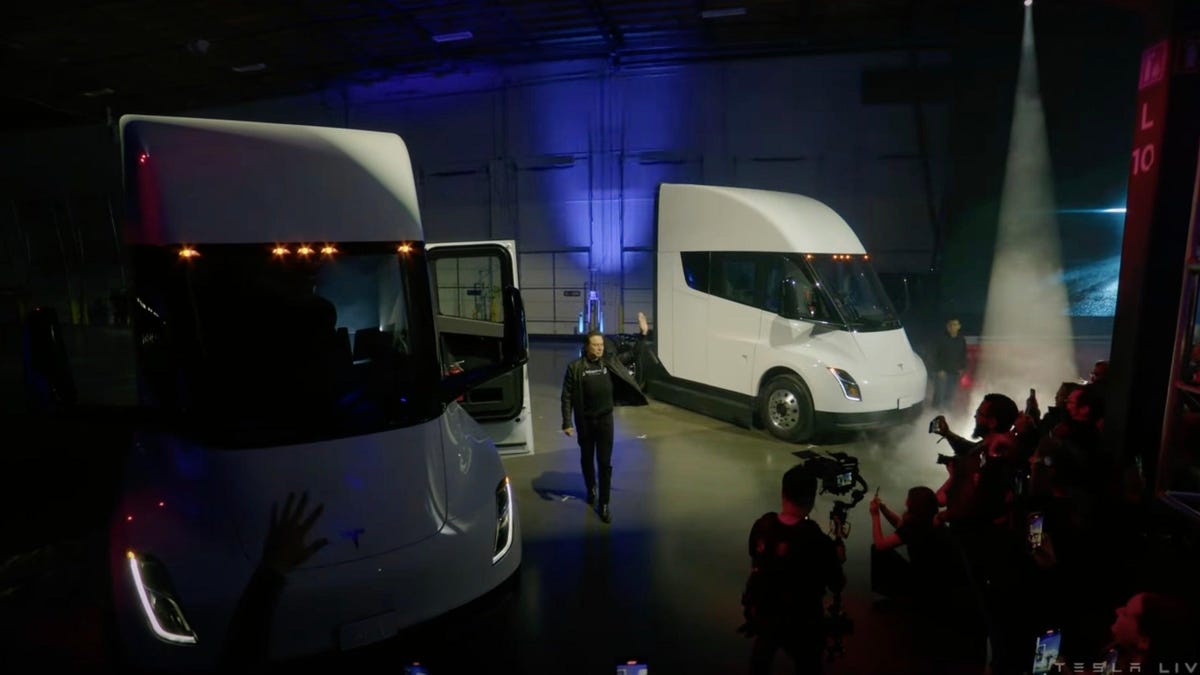
Unlike many other competitors dipping their toes into the electric trucking space, Tesla’s semi is one of the relatively few built as an EV from the ground up. Though it remains to be seen how the truck will actually perform in real world commercial runs, Tesla says it can travel 500 miles on a single charge, accelerate from 0-60 in about 20 seconds, and recharge around 70% of its battery in about an hour. All of that’s made possible, in part, by four independent motors on the truck’s rear axes.
G/O Media may get a commission
Advertisement
“It looks like an elephant moving like a cheetah,” Musk said.
Advertisement
More important than speed though is the range. Anxiety over limited range, while a major point of concern for electric vehicles, are amplified further for truckers who might have to take on longer trips along U.S. roadways with a still limited electric charging network. Days prior to the event Musk released a tweet saying the Tesla team had successfully completed a 500 mile trip in the semi with 81,000 pounds of cargo, though it’s unclear if that also included the weight of the vehicle itself. During Thursday’s presentation, Musk made a point to emphasize the particular positive impact he believed the semi would have in dense urban areas.
“A lot of people don’t realize it’s quite unhealthy to live next to a highway with diesel trucks,” Musk said. “In addition to climate change and global warming, matters it [the semi] is also quiet and it’s going to improve the quality of your air and fundamentally improve the health of people living near highways.”
One thing Tesla and Musk wouldn’t comment on however: the price. In the past, Tesla said its semi wound start at around $150,000 with longer range versions costing around $180.000. Those pricing figures start getting more complicated however when one starts to account for tax credits and other incentives dangled in front of commercial buyers like Pepsi. In Pepsi’s case, the Journal notes, it appears a local public health agency called The California Air Resources Board will fund half of the company for replacing its old trucks with the 15 Tesla semis.
Like Tesla’s other products, the semi’s aesthetic design departs from conventions. The steering wheel will sit in the center of the cab rather than the left or right side. Touch screens are then adorned on either side of the driver. And while Musk made no mention of autonomous driving during the event, he has previously suggested he would like to introduce some form of self-driving capabilities to semi fleets in the future.
Advertisement
Successfully electrifying freight trucking would significantly contribute to Tesla’s overarching mission of reducing greenhouse gas emissions. In the U.S. alone, the Environmental Protection Agency estimates 27% of greenhouse gas emissions stems from transportation, the highest of any sector. While most of that (57%) comes from passenger cars and light duty vehicles, a sizable chunk (26%) comes from medium and heavy duty trucks. During his announcement, Musk reportedly referred to the semi as, “a crucial piece of the puzzle,” for environmental sustainability.
Tesla’s road to finally shipping its semi has come with numerous delays and missed deadlines, brought on by a mixture of component shortages, and pandemic complications. All of that means people would probably take any other predictions when it comes to future semi’s with a grain of salt. Still, that hasn’t stopped Musk and Tesla from making them anyways. Earlier this year, in the midst of avoiding a meltdown at Twitter, Musk told investors listening in on a third quarter Tesla earnings call he expected to ship 50,000 of the semi trucks annually by 2024. It would take a truly remarkable production acceleration to make that a reality, particularly considering Tesla’s Board Chair Robyn Denholm recently said the company could optimistically hope to ship just around 100 units by the end of this year.